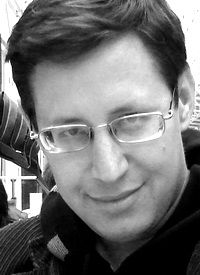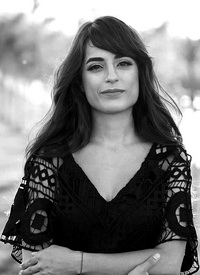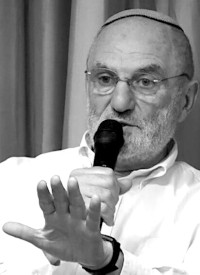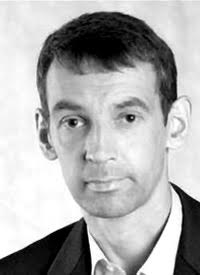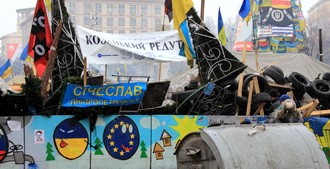
A large group of aggressive young men smash windows and fiercely throw bottles and stones. Behind them there’s a huge crowd shouting ‘We want in the EU’. The picture should apparently frighten people in the EU countries. Some comments in the western media suggest, as a joke, that the picture resembles barbarians amassing near the EU borders – ready to enter. Moreover, it may seem irrational that there are far-right and even sheer neo-Nazi’s forces at the forefront of the protest. While shouting ‘Glory to the nation and death to enemies’ they demand… to join the EU, that is to say – to deliver a part of national sovereignty to EU bureaucracy. What’s behind such an apparent irrationality?
To begin with, I should remind that it’s the suspension of a free-trade agreement with the EU that sparkled the protests. Although signing free-trade treaties usually triggers people’s indignation worldwide, the Ukrainian case seems to be different. Some commentators call the protesters ‘anti-zapatistas’, but we should not forget that there are some layers of society who gain from free-trade while others suffer. As Clara Weiss and Peter Schwarz put it recently:
‘a glance at Romania, Bulgaria, Hungary and other Eastern European countries shows where incorporation into the EU leads. In these countries, extreme poverty, cultural and social disintegration, and corruption are rampant, while far right forces are growing. Only the ruling elite and a tiny section of the middle class profit from EU membership’.
These parts of middle class and ruling elites stay behind this process of forcing Ukraine to neoliberal globalization. However, they disagree about the direction: one part is interested in free-trade with EU, while another one is more interested in preserving economic ties with Russia and the Asian countries. It causes the split inside ruling elites and severe struggles for power among groups of politicians. Both camps try to mobilize their supporters using all possible tools and means. Some ‘fat cats’ from the ruling party have recently fled to the opposition camp, while other continue bargaining. Thus strengthened, the opposition launched a counter-offensive, calling their supporters to the central square ‘Maidan’ – the symbol of the ‘Orange revolution’ that brought them to power in 2005.
The split in the Ukrainian society may be compared with a division into pro-Republican and pro-Democrat states in the US – and it turns to be more visible and deeper. The ruling party has been for too long feeding far-right forces. The logic was that it will win elections if it will run against far-right, xenophobic party. And the main far-right party ‘Svoboda’ (the former ‘Social-National Assembly’) quickly and easily entered the parliament. “Svoboda’s success so far has been built on a skilled public-relations campaign, complete with videos re-enacting Nazi propaganda tropes like torchlight parades and speeches that echo Hitler. Svoboda also honors Ukraine veterans who fought with the Nazis in a unit known as the Waffen SS-Galicia’.
The militants of the party have time and again attacked left-wingers, Roma people, art-exhibitions, science conferences and public meetings, thus creating an atmosphere of fear in the society. However, there are more rivaling far-right and Nazi groups (pro-Russian and anti-Russian) that as a rule mushroom in times of economic and social crises. The network of neo-nazi groups is constantly growing – it’s nearing the scale comparable with the situation in the late German Weimar republic. Large portions of the Ukrainian youth embrace the ideology of Nazism as one that provides them a feeling of the self-dignity. In some communities the mere socialization of a young man is provided by his inclusion into a far-right group. Ukrainian far-right movements organize summer camps for the youth of the mostly hit by economic depression regions where young men are trained as a para-military force able to wage violent and military action. The scale of expansion of the far-right ideology in Ukraine can be seen in the case of Pavlo Lapshyn – a white supremacist from Ukraine recently accused in Great Britain in terrorism and murder: ‘Lapshyn was influenced by the ideologies of right wing extremists in Ukraine.’
All these neo-nazi groups are striving to power and hope to have a support of European far-right parties and movement. Thus, we see how Ukrainian authorities are playing with fire when trying to ‘nurse’ more ‘convenient’ opposition. All the trends of deepening far-right radicalization in society are quite clearly visible in recent clashes over ‘euro-integration’. Far-right militants were brought together from different regions to take part in prospective violent confrontation. Amassing in the parks and streets of the capital, they were waiting till November 30 when riot police attacked protesters on the central square. The attack was rather unexpected and unnecessary – the protests began to decline and could ‘die out’ peacefully in few days. However, this recent example of police brutality triggered mass mobilization of the far-right supporters the next morning. The head of the presidential administration – one oligarch, D. Lyovochkin, seemingly ordered the police to attack – and then fled the ruling party. Thus, we have a kind of political coup’d’etat inside the ruling party with far-righters playing the leading role.
These militants shouting ultra-right slogans on the December 1 protests in Kiev are seen as heroes just because they are able to make violent assaults. However, we should not forget that Ukrainian society is divided almost 50/50 on the basis of (East-West) regional division. It can be compared with the division of the US society into South and North. One part of Ukrainian citizens largely considers the current government as a government of the other part (‘aliens’) imposed on them and vice-versa. Thus, further division of the society can lead to the balkanization of the country with a rise of the far-right ‘guarders’ in both parts of the country and consequently to the prospect of ‘euro-integration’ of large numbers of people as… political or civil war refugees.
We should also admit that Ukraine (under the pressure from EU and Russia) is caught into the trap of a false choice. Far-right parties and groups while playing up on divisions are striving to power. However, they are considered by a part of economic elites to be ‘the best servers to their interests’. We have never seen before such a great number of far-right and neo-Nazi militants on the streets of Ukrainian capital. Encouraged by a large part of population as ‘guarders of national interest’ and some clans of economic elite as well, they become more violent and rampant as they feel their impunity.
Another aspect of the recent Ukrainian protests that should be also highlighted is the striving for access to the EU. A large part of the population confuses free-trade agreement (Association with EU) with a visa-free access to the EU. As well as many Eastern European countries we are quite often blinded by an illusionary vision of the EU – as a kind of ‘promised land’. Although countries such as Tunisia, Turkey, Morocco and others have already signed economic ‘Association with EU’ none is closer to the EU, or their people able to freely travel within the EU. However, the illusions are generously nurtured by Ukrainian politicians, especially during election campaigns. Although, both the EU and the IMF demand increased gas prices, imposing austerity measures and freezing of the salaries in Ukraine, too many people seem not to care because they see their future only in western countries. They don’t seem to envisage the prospect of a better living in Ukraine. Thus, every delay of realizing their European dream is considered as a betrayal of their hopes and promises.
The far-righters skillfully exploit such sentiments in their strive for power. Moreover, too many far-right militants worship Europe of the 1930’s and feel the need to unite their forces with rising European far-right parties and movements. Thus, we have some intersecting dimensions of the protest: internal and external, social and economic. It should be also pointed out that western and Russian media try to take sides in the conflict and the bias of both sides is visible in their depiction of protest as either ‘masterminded and provoked by the US’ or ‘a strive for democracy and European values’. While Russian media emphasize mostly different conspiracy theories, the western media try to ignore the large numbers of far-right militants and their completely xenophobic slogans. They only pay attention to small (mostly invisible in crowds) groups of liberal organizations of 20-30 members showing ‘correct’ slogans. We should not ignore the fact that some small groups of feminist/left-wingers were beaten and expelled when they tried to bring social slogans to the protests – they are considered as ‘aliens’ by the majority of protesters. Some pro-democracy liberals take part in the protests (in a crowd of far-righters) and just provide a kind of ‘cover’, thus, saving the image of the mainly far-right protest. All that we see in Ukrainian ‘euro-protests’ is mainly the expression of political struggle inside the ruling elite, escalated by the neoliberal globalization process. The ruling elites will agree with the issue of free-trade some way or another. But what we don’t hear, despite the noise that is produced by politicians, hysterical neo-nazis, a part of interested middle class and mass-media – is a voice of frustrated social lower strata – those who will be most severely hit by a free-trade agreement. I think this crisis will be solved politically; the far-right supporters will be de-mobilized till the next step of escalation or till the time when they are in need to suppress real social movements. Meanwhile, the show goes on.
Dmitry Kolesnik, LeftEast
-
Історія
Африка и немцы - история колонизации Намибии
Илья Деревянко история колонизации Намибии>> -
Економіка
Уолл-стрит рассчитывает на прибыли от войны
Илай Клифтон Спрос растет>> -
Антифашизм
Комплекс Бандеры. Фашисты: история, функции, сети
Junge Welt Против ревизионизма>> -
Історія
«Красная скала». Камни истории и флаги войны
Андрій Манчук Создатели конфликта>>

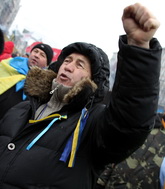
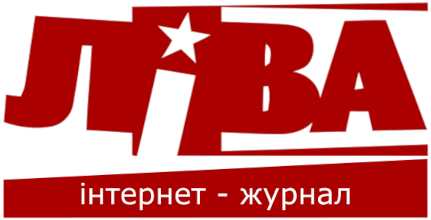










 RSS
RSS

